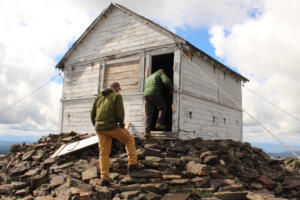By Susan Knilans, Guest Columnist
They were not making it easy. They could have landed on a low, dangling branch. I have a lot of those in my yard. But they landed on four old, decaying fence boards. I “guesstimated” they numbered over 30,000 — a fine spring swarm of beautiful, amber-colored honeybees.
The bees came from one of the four bee hives in my backyard. Swarming is a much-anticipated part of the bees’ annual rite of reproduction. Birds hatch eggs, bunnies snuggle their hairless young. Bees in a healthy hive send half of their colony to fly off into the world in search of a new place to live. What was one is now two. And this is the season!
Hello neighbors. I’m Susan Knilans, local backyard beekeeper, and president of the nonprofit Preservation Beekeeping Council (PBC), centered here in Camas. At this time of year, I help with local honeybee rescue, rounding up the many bee swarms that are such a part of springtime doings each year.
The rest of the year, I tend my hives, weave new ones from straw, teach beekeeping and, along with PBC’s other volunteers, offer informational programs about pollinator health all over the region. Come autumn of this year, I’ll be in Holland, speaking at the first International Conference on Natural Beekeeping.
You could call me besotted with bees, but most folks who learn a bit about the amazing lifestyle and incredible value of honeybees switch from fear to wonder pretty quickly.

